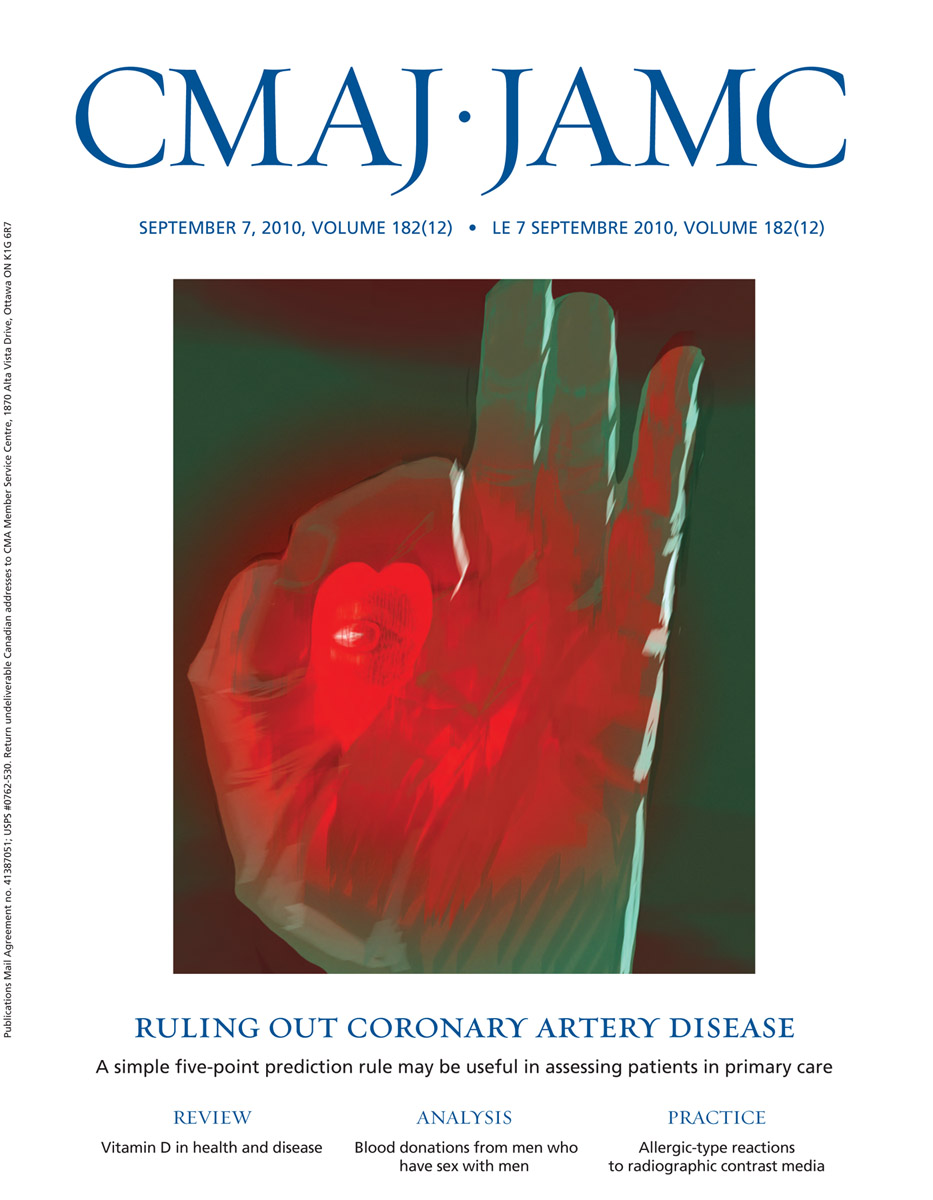
Splint as effective as a cast in children with minimally angulated distal radius fractures

Splint as effective as a cast in children with minimally angulated distal radius fractures
Cast versus splint in children with minimally angulated fractures of the distal radius: a randomized controlled trial
CMAJ. 2010 Oct 5;182(14):1507-12Did you know you're eligible to earn 0.5 CME credits for reading this report? Click Here
Synopsis
96 children with a minimally angulated greenstick or transverse fracture of the wrist were randomized to receive either a wrist splint or a short arm cast for 4 weeks. The children were assessed for physical function at 6 weeks and degree of angulation at 4 weeks. Range of motion, grip strength, and complications were also noted. The two groups were not found to have significant differences for any of the outcome measures.
Was the allocation sequence adequately generated?
Was allocation adequately concealed?
Blinding Treatment Providers: Was knowledge of the allocated interventions adequately prevented?
Blinding Outcome Assessors: Was knowledge of the allocated interventions adequately prevented?
Blinding Patients: Was knowledge of the allocated interventions adequately prevented?
Was loss to follow-up (missing outcome data) infrequent?
Are reports of the study free of suggestion of selective outcome reporting?
Were outcomes objective, patient-important and assessed in a manner to limit bias (ie. duplicate assessors, Independent assessors)?
Was the sample size sufficiently large to assure a balance of prognosis and sufficiently large number of outcome events?
Was investigator expertise/experience with both treatment and control techniques likely the same (ie.were criteria for surgeon participation/expertise provided)?
Yes = 1
Uncertain = 0.5
Not Relevant = 0
No = 0
The Reporting Criteria Assessment evaluates the transparency with which authors report the methodological and trial characteristics of the trial within the publication. The assessment is divided into five categories which are presented below.
4/4
Randomization
4/4
Outcome Measurements
4/4
Inclusion / Exclusion
4/4
Therapy Description
4/4
Statistics
Detsky AS, Naylor CD, O'Rourke K, McGeer AJ, L'Abbé KA. J Clin Epidemiol. 1992;45:255-65
The Fragility Index is a tool that aids in the interpretation of significant findings, providing a measure of strength for a result. The Fragility Index represents the number of consecutive events that need to be added to a dichotomous outcome to make the finding no longer significant. A small number represents a weaker finding and a large number represents a stronger finding.
Why was this study needed now?
Minimally angulated (15 degrees or less) distal radius fractures in children do not usually require reduction and are most commonly treated with a short arm cast for 4-6 weeks. Negative features of a cast include poor hygiene, risks from a poor fit, and discomfort. Splinting may be a viable alternative based on studies in adults, though a direct comparison with casting in children is needed before recommendations can be made.
What was the principal research question?
Is a prefabricated wrist splint as effective as routine casting in the recovery of physical function in children with a minimally angulated distal radius fracture at 6 weeks?
What were the important findings?
- At 6 weeks, the physical function score was a mean of 92.8 in the splint group compared to a mean of 91.4 in the cast group. The mean difference between the groups was 1.44 (95% CI -1.75-4.62). This was not a significant difference.
- At 1 week, the mean angulation of the splint group was 8.65 degrees compared to 7.92 degrees for the cast group. The mean difference was -2.43 (95% CI -2.43-3.90) and not significant. At 4 weeks the mean angulation had increased to a mean of 9.85 degrees in the splint group and 8.20 in the cast group for a mean difference of -1.65 (95% CI -1.82-5.11), which was not significant.
- The range of motion at 6 weeks was not significantly different between the groups.
- Grip strength at 6 weeks was not significantly different between groups, with a mean of 26.6 pounds in the splint group and 28.8 pounds in the cast group (mean difference of -2.16, 95% CI -7.34-3.02).
- The wrist pain score was not significantly different between groups at any time point.
- In terms of patient preference, 12% of the patients in the splint group would have preferred casting treatment. In contrast, 68% of patients in the cast group reported a preference for splinting. This difference in patient preference was significant (p<0.001). In addition, 5% of parents of children assigned to splinting expressed a preference for casting, whereas 60% of parents of children in the cast group would have preferred a splint (p<0.001).
What should I remember most?
The use of a prefabricated splint was shown to have similar effectiveness to a cast in terms of patient function and fracture stability. In addition, the splint was associated with a higher level of patient and parental satisfaction.
How will this affect the care of my patients?
Due to what appear to be similar outcomes but different levels of patient convenience and satisfaction, the use of a splint may be a preferred alternative to casting in the treatment of minimally angulated distal radius fractures. The authors note that the sample size may have been too small to detect differences in all outcome measures.
Learn about our AI Driven
High Impact Search Feature
Our AI driven High Impact metric calculates the impact an article will have by considering both the publishing journal and the content of the article itself. Built using the latest advances in natural language processing, OE High Impact predicts an article’s future number of citations better than impact factor alone.
Continue



 LOGIN
LOGIN

Join the Conversation
Please Login or Join to leave comments.
Orthopaedic Surgeon - Canada
confirme pratique